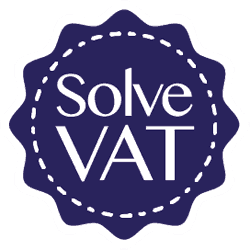VAT Invoice requirements
VAT AccountantsWhat is a VAT Invoice?
VAT invoices are a required document issued by UK VAT registered businesses to customers upon the supply of goods or services.
To be a valid VAT invoice you must show the following details on any VAT invoices you issue:
- a sequential number based on one or more series which uniquely identifies the document
- the time of the supply
- the date of issue of the document (where different to the time of supply)
- the name, address and VAT registration number of the supplier
- the name and address of the person to whom the goods or services are supplied
- a description sufficient to identify the goods or services supplied
- for each description, the quantity of the goods or the extent of the services, and the rate of VAT and the amount payable, excluding VAT, expressed in any currency
- the gross total amount payable, excluding VAT, expressed in any currency
- the rate of any cash discount offered
- the total amount of VAT chargeable, expressed in sterling
- the unit price.
Special rules apply to invoices issued under a VAT margin scheme or subject to a reverse charge. You need to follow the rules for such supplies.
The importance of a VAT invoice
In the case of Tower Bridge GP Ltd the issue was whether a taxable person is entitled to exercise a right to deduct input tax despite the fact that it held (and holds) no proper VAT invoice in respect of the supply in relation to which it claims to make the deduction. The Court of Appeal found against the Appellant.
Types of invoices
In regards to the VAT on invoice, there are three main types: full VAT invoice, simplified, and modified. A full one provides the most extensive information for customers regarding the total amount payable including VAT. It is issued when such cost exceeds £250 in cases of either supplies or services. Simplified ones contain fewer particulars than complete vouchers but still fulfill His Majesty’s Revenue and Customs (HMRC) conditions with transactions priced at no more than £250 inclusive of value-added tax. Reduced detail versions too may be utilized where a comprehensive voucher isn’t obligatory like small amounts owing payments scenarios as an example that meets HMRC requirements nonetheless.
VAT registration number
The VAT registration number is an important part of any VAT invoice and it identifies the business as an officially registered VAT business. To register for VAT companies need to make the appropriate application to HMRC.
Invoice date and tax point
The invoice date and tax point are of great importance because the time of supply at which goods or services were supplied determines what date needs to be recorded in terms VAT. The date on which an invoice was issued must also be noted since this helps ensure that calculations for taxation purposes have been done correctly, avoiding issues with HMRC. All relevant data should always include both the invoice date and the tax point information directly onto your documents.
Simplified invoices
Simplified or less detailed invoices are used for transactions totaling no more than £250 including VAT and require fewer details when compared to a full VAT invoice. These invoices are mainly used in retail supplies or small deals where the requisite level of detail is not necessary.
Despite being different there still needs to be certain information included such as supplier and client data, their respective registration numbers, the date created on the document along with its tax point.
Modified invoices
Modified invoices are a practical option for businesses that need to provide an invoice over the minimum threshold of £250 plus VAT for goods or services. This type of document must display all pertinent information, such as the total amount due including any related tax and net price. It does not require every detail necessary in a full version. The prices given should be inclusive of VAT.
Customers must give permission before a business can issue these modified versions which feature fewer details than those more comprehensive ones often needed. For larger orders, this kind of simplified approach could benefit both supplier and customer alike while remaining valid according to UK law requirements on taxation matters.
Electronic invoicing and HMRC compliance
Electronic invoicing (e-invoicing) is becoming a popular choice among businesses. This process involves sending and storing invoice documents in an electronic format to forgo paper documentation. The content found on e-invoices must meet all requirements from HMRC, but it’s not necessary for VAT-registered companies to inform customers when they begin issuing these kinds of invoices.
E-invoice systems have several benefits such as increased efficiency, reduced waste production, and easy access to financial records. There are certain best practices that should be followed – particularly with Making Tax Digital for VAT – so compliance standards can be upheld at all times by all vat registered businesses.
It is not mandatory for businesses to issue electronic invoices when making supplies. The UK e-invoicing requirements mirror those of paper invoices.
Self-billing arrangements
Self-billing can be a method for companies to handle their invoicing whereby the customer takes on the responsibility of creating an invoice as well as giving a copy to the supplier. Adhering to HMRC’s regulations is important and VAT must be displayed on these invoices along with details such as the supplier information, VAT registration number, date of issue, and tax point.
Zero-rated and exempt VAT supplies
The invoicing requirements for zero-rated and exempt supplies must be followed by businesses to remain compliant. The difference between these two types of supplies is that zero-rated goods have 0% VAT attached to them which is a rate of VAT. Exemption is not a rate of VAT.
